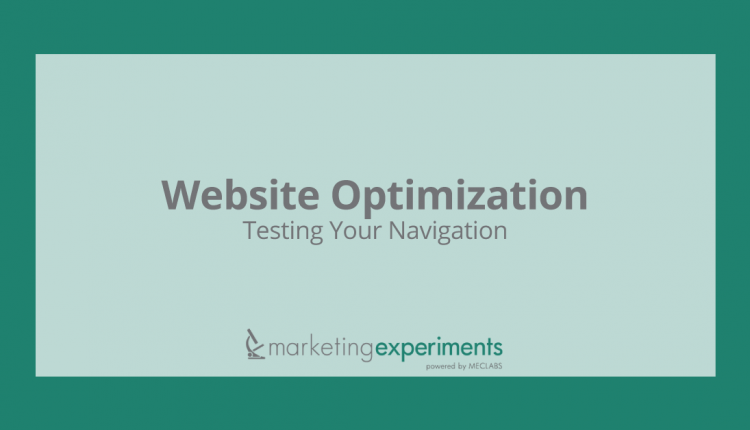As we are testing our websites, we often focus on homepages, landing pages and funnels. These are the pages that “move the needle” and get results. However, there is one aspect of many sites that goes unnoticed by optimizers — the site navigation.
Site navigation is important because it gets your visitors where they need to be. Also, it’s usually one of the static elements of your site.
The navigation is visible on all of your pages and is often the one constant throughout the website.
It simply makes sense to focus your efforts on such a high visibility area that has such a great impact on your customers’ experience.
Now, you may be asking yourself, “What can I test in my navigation?”
To answer that question, I’ve constructed a short guide to help you start optimizing your navigation.
Potential navigation testing opportunities include:
- Changing link names that may be confusing
- Optimizing subcopy (if you give details in your navigation)
- Changing hierarchies or organizations
- Adding or deleting links
- Optimizing visual features (icons)
- Optimizing navigation indicators (hover and click functionality, lines, highlights, etc.)
Begin with goals and objectives
It’s important to have clearly defined goals and objectives when testing your navigation.
While you want your site navigation to drive conversions, you should always remember that this is ultimately a tool for your site visitors.
It should guide them where they need to go in a clear, concise manner. So how do you measure your navigation’s success? What would be your primary KPI? In many tests, our KPIs are conversions or clickthroughs. However, much more thought must go into defining navigation KPIs.
Choosing the correct KPI
Conversion is often a difficult metric to attribute to navigation changes as it is so far removed from the macro yes of a conversion.
Once a visitor navigates to the page they’re looking for, they still have to interact with that page and make their way through the funnel.
You may have the perfect navigation, but flawed funnels will ultimately impact your conversion metric and make it difficult to validate a test.
Clickthrough
What about clickthrough? Clickthrough can be used as a navigation KPI, but not in the sense that more clicks are better than less clicks. More clicks aren’t always an indicator of success.
What if your visitors are clicking more because they’re confused? What if they aren’t clicking in the right places?
Clickthrough can be used when you have a well-thought-out test. An example where clickthrough could be your primary KPI is if you were testing link copy.
Do visitors want to navigate to “Best deals” or “Most awesome deals”? Counting clicks could tell you which resonates best with the visitor.
“Add to Cart” time
If everything on the site remains the same, you can also use “Add to Cart” time as a success metric.
As stated earlier, the goal of a successful navigation frame is to get visitors where they need to be, and if you’re selling something, you need to get them to add items to their cart.
By optimizing your navigation, you should theoretically be making it easier for a visitor to find what they are looking for and add it to their cart. A shorter “Add to Cart” time may indicate that your navigation is doing its job better.
SEO
Another important success metric when optimizing your navigation is SEO. Many links in a site’s navigation can often have a significant effect on SEO.
This is an easy KPI to monitor because, ideally, traffic should increase as SEO equity improves.
User experience metrics
Finally, if you have any tracking related to customer experience metrics, you could use user experience as a KPI.
If you provide surveys, ask questions about the navigation or monitor feedback that your site receives, you may be able to see if people are able to more easily navigate your site.
Once you’ve decided to test your site’s navigation and have clearly identified your KPIs, remember to always keep in mind the purpose of a site’s navigation: to get visitors where they need to be.
If you can optimize that thought process, hopefully an increase in conversions will follow.
You might also like
Web Usability: The Squint Technique and other insights from your peers [More from the blogs]
Online Testing: 6 business lessons I’ve adapted to website optimization [More from the blogs]
Website Testing: IBM’s navigation elements test leads to 128% increase in clickthroughs [MarketingSherpa case study]
Testing and Optimization: Radical website redesign program improves lead gen 89% [More from the blogs]



